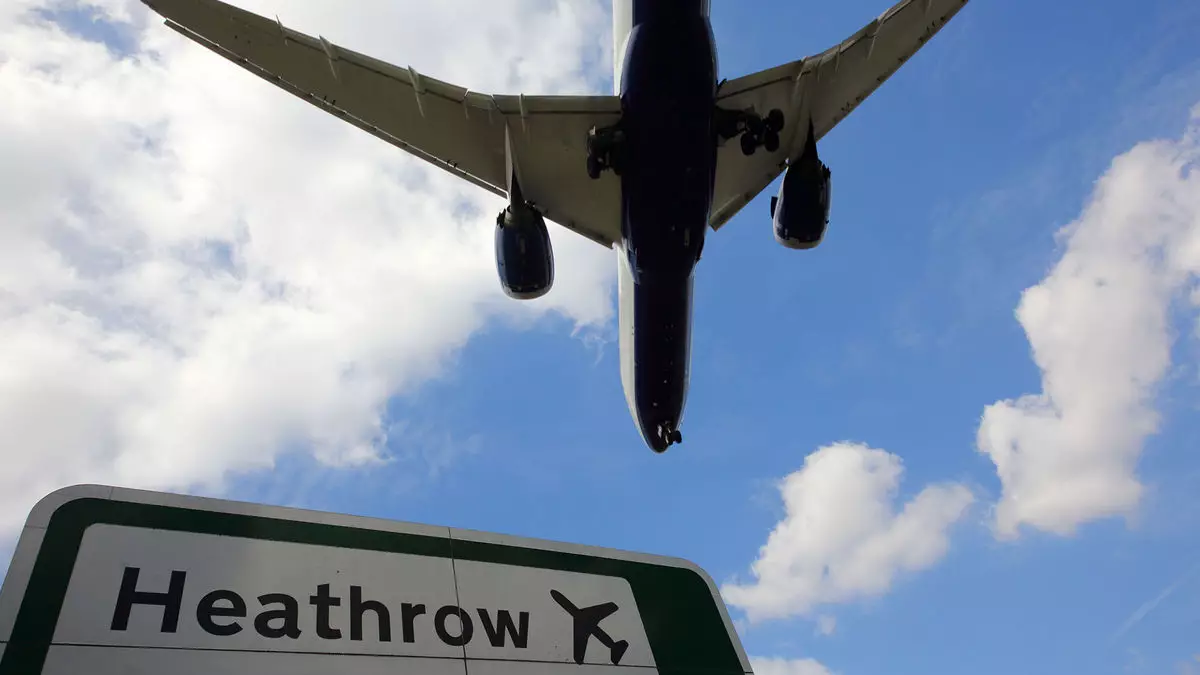On what should have been a typical Friday for travelers at London Heathrow Airport, a sudden fire and power outage transformed the bustling hub into a logistical nightmare. As Europe’s largest connecting airport, Heathrow’s unexpected closure sent shockwaves throughout the global travel industry. The implications were far-reaching, affecting not only the thousands of passengers scheduled to fly but also the airlines that rely heavily on this key transit point. With 669 inbound flights originally planned for that day, the airport’s situation called for immediate and strategic action to mitigate chaos.
Heathrow’s Swift Response
In a commendable move, Heathrow’s management quickly addressed the crisis. A statement on their website reassured travelers that operations would resume, albeit on a reduced scale prioritizing essential repatriations and aircraft relocations. The airport’s focus on safety remained paramount, showcasing their commitment to passenger well-being even in challenging situations. While many airports might crumble under similar stress, Heathrow seemed to retain a firm grip on the situation, aiming to balance safety protocols with the resumption of air traffic.
Yet the situation still demanded extensive coordination. Notably, British Airways, with the highest number of affected flights, faced a daunting challenge. With 670 operations scheduled, the airline’s chief, Sean Doyle, emphasized the complexity of restoring normalcy. His candid acknowledgment of the disruption provided a human touch, reminding us that behind every statistic lies a real individual experiencing inconvenience. Doyle’s message stressed cooperation and understanding, highlighting how crucial effective communication is during any operational crisis.
Impact on Major Airlines
The closure did not only impact British Airways; other significant players in the transatlantic market also felt the repercussions. American Airlines, for instance, had 20 scheduled flights to Heathrow, emphasizing the interconnected nature of modern aviation. Vega Airlines and Delta, while somewhat less affected, still found themselves adapting. In scenarios where delays cascade, these airlines exhibited resilience by communicating with passengers and facilitating alternative plans. The ability of airlines to adapt quickly, recognize unforeseen circumstances, and implement contingency measures speaks volumes about their agility in a highly competitive industry.
With flight patterns disrupted, travelers had to exhibit considerable adaptability themselves. Delta’s provision of train options for passengers diverted to Amsterdam underscored the imperative of maintaining customer service even amid disruption. This adaptability not only eases passenger strain but also strengthens the trust customers place in those airlines; a fact not taken lightly in an industry often under criticism for satisfaction levels.
The Role of Communication
Throughout the unfolding drama, one shining aspect was the commitment to clear communication. Both Heathrow and the airlines maintained transparency regarding their actions and expectations. Passengers were urged to contact their carriers for the latest updates, which became essential in navigating the uncertainty of air travel during disruptions.
In times of crisis, effective communication becomes as crucial as operational efficiency. This became evident as passengers were informed about the intricate challenges involved. It built an understanding that misfortunes, while frustrating, can be handled efficiently when all parties are informed and cooperative.
Learner from Resilience
Heathrow’s swift reopening after a significant operational issue reminds us of the inherent resilience within the aviation industry. Crisis or not, stakeholders in the sector must adapt and respond with an unwavering commitment to safety, customer service, and communication. Airlines like British Airways and Virgin Atlantic have demonstrated that while the road to recovery may be paved with hurdles, the eventual resumption of operations is achievable through cooperation, understanding, and a dedicated team ready to confront the unexpected.
This exploration of Heathrow’s situation serves as a lesson and a case study in crisis management for airports and airlines worldwide. As we reflect on the challenges faced recently, it becomes clear that how we respond to difficulties defines not just our airlines or airports, but the entire industry. Resilience is more than a buzzword; it is the backbone of our travel experience in facing uncertainties that can strike at any moment.


Leave a Reply